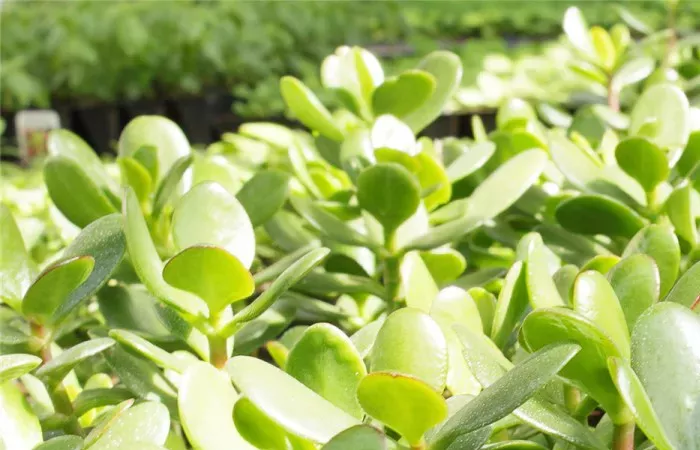Jade plants, scientifically known as Crassula ovata, are popular succulents valued for their attractive appearance and low-maintenance care. Their worth can vary widely depending on several factors, including size, age, variety, and overall health. This article explores the factors that influence the value of jade plants and provides insight into their pricing in different contexts.
Understanding the Jade Plant
The jade plant is native to South Africa and is well-loved for its glossy, rounded leaves and tree-like appearance. It is often grown indoors as a houseplant but can also thrive outdoors in suitable climates. Known for its resilience and ease of care, the jade plant is a popular choice for both novice and experienced gardeners.
Factors Affecting the Value of Jade Plants
Several factors influence how much a jade plant is worth. Understanding these factors can help you determine the value of a jade plant and make informed decisions if you are buying or selling one.
Size and Age
The size and age of a jade plant play a significant role in its value. Generally, larger and older plants are more expensive than smaller, younger ones. A mature jade plant with a well-developed trunk and abundant foliage is typically more valuable. The price can increase significantly for plants that are several years old and have achieved a substantial size.
Variety and Cultivar
There are many different varieties and cultivars of jade plants, each with its own unique characteristics. Some varieties are rarer and more sought after than others, which can affect their price. Common jade plant varieties include:
Crassula ovata ‘Gollum’: Known for its tubular leaves with a unique shape.
Crassula ovata ‘Variegata’: Features leaves with cream or yellow edges, adding to its aesthetic appeal.
Crassula arborescens: Also called the “Silver Dollar” plant, it has a distinct silvery-blue color.
Rare or unusual varieties often command higher prices due to their limited availability and unique features.
Health and Condition
The overall health and condition of a jade plant are crucial factors in determining its value. A healthy jade plant should have vibrant, undamaged leaves and a strong root system. Signs of poor health, such as yellowing leaves or root rot, can significantly reduce the plant’s value. Buyers are willing to pay more for a well-maintained plant that shows no signs of disease or pest infestation.
Pot and Presentation
The pot and presentation of a jade plant can also impact its value. Plants presented in decorative or high-quality pots often fetch higher prices. Additionally, jade plants that are styled or pruned into attractive shapes can be more valuable due to their enhanced aesthetic appeal.
Pricing of Jade Plants in Different Contexts
The price of jade plants can vary depending on where and how they are sold. Here is a breakdown of typical pricing in various contexts:
Retail Nurseries and Garden Centers
In retail nurseries and garden centers, jade plants are often sold at different price points based on their size and variety. Smaller jade plants, typically 4-6 inches in diameter, might be priced between $10 and $20. Medium-sized plants, around 8-12 inches, can range from $25 to $50. Larger, more mature plants, especially those in decorative pots or unique varieties, may cost $75 or more.
Online Plant Stores
Online plant stores offer a wide range of jade plants, and prices can vary based on the seller and shipping costs. Smaller jade plants on online platforms might start around $15, while medium and larger plants can range from $30 to $100. Rare or collectible varieties may command premium prices, sometimes exceeding $150 or more.
Plant Shows and Auctions
Plant shows and auctions provide opportunities to acquire unique and high-quality jade plants. At these events, prices can vary greatly based on the plant’s rarity and condition. Some jade plants might be sold for hundreds of dollars, especially if they are particularly large, old, or rare.
Local Plant Exchanges and Markets
Local plant exchanges and markets can be a more affordable way to acquire jade plants. Prices at these venues are often lower than those at retail stores due to the informal nature of the transactions. You might find jade plants ranging from $10 to $30, depending on the size and condition.
Collectibility and Investment Value
In addition to their value as decorative houseplants, jade plants can also have investment potential. Collectors often seek rare or unusual jade plant varieties, driving up their prices. If you have a particularly rare or well-cared-for jade plant, it may appreciate in value over time, making it a worthwhile investment.
Caring for Your Jade Plant to Maintain Value
To ensure your jade plant retains its value, proper care is essential. Here are some tips for maintaining a healthy and valuable jade plant:
Provide Adequate Light: Jade plants thrive in bright, indirect light. Ensure your plant receives sufficient light to promote healthy growth.
Water Sparingly: Overwatering is a common issue with jade plants. Allow the soil to dry out between waterings to prevent root rot.
Use Well-Draining Soil: Plant your jade in a well-draining soil mix, such as cactus or succulent soil, to promote healthy root growth.
Fertilize Occasionally: Feed your jade plant with a balanced, water-soluble fertilizer every 4-6 weeks during the growing season to support healthy growth.
Prune Regularly: Prune your jade plant to maintain its shape and remove any dead or damaged leaves. Regular pruning helps keep the plant healthy and visually appealing.
See also: How to Care for Succulents Outdoors
Conclusion
Jade plants are valued for their beauty, ease of care, and potential as collectible items. Their worth can vary based on size, age, variety, health, and presentation. Whether you are buying or selling a jade plant, understanding these factors can help you make informed decisions and appreciate the value of this popular succulent. With proper care, jade plants can remain a valuable and attractive addition to any indoor space.


